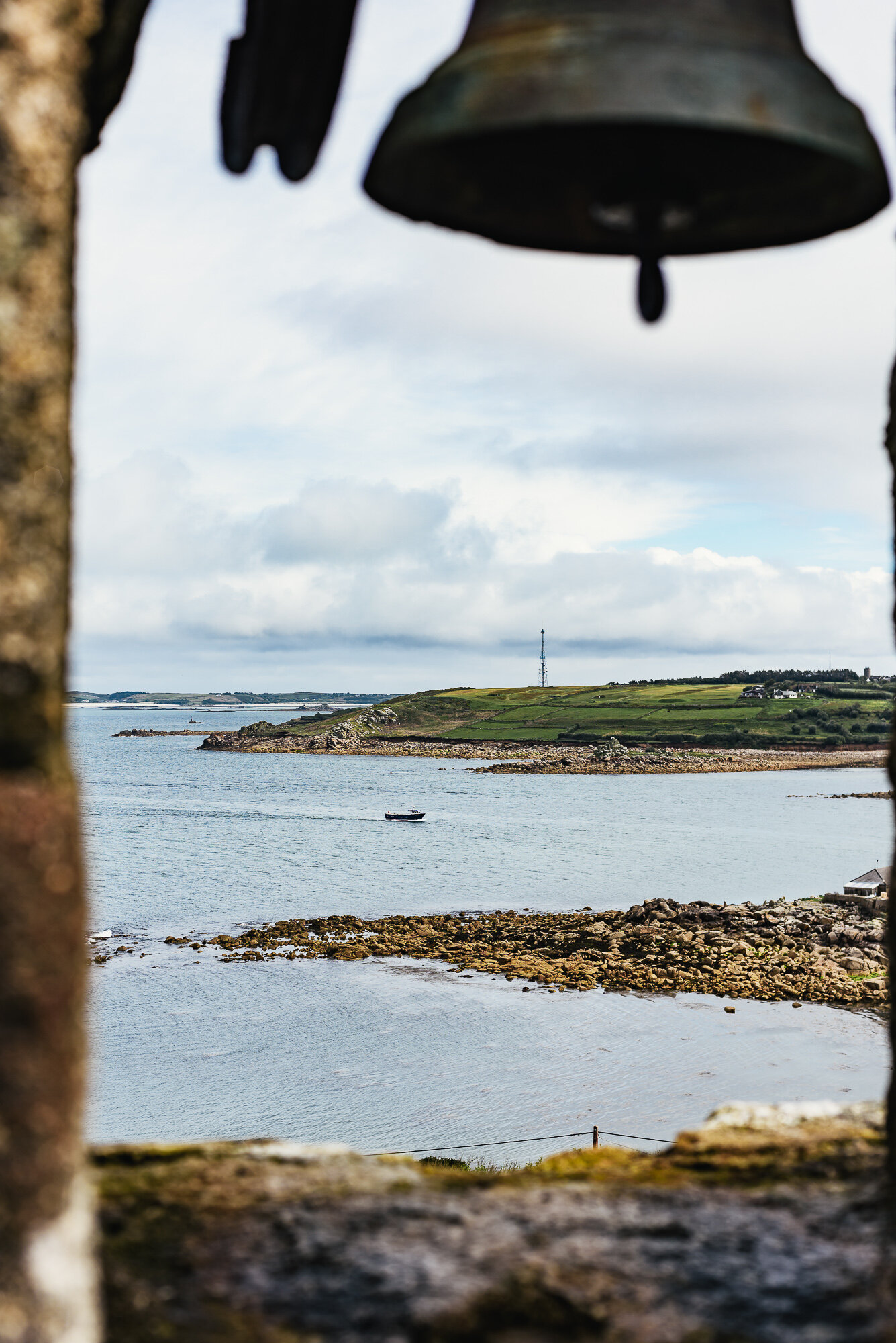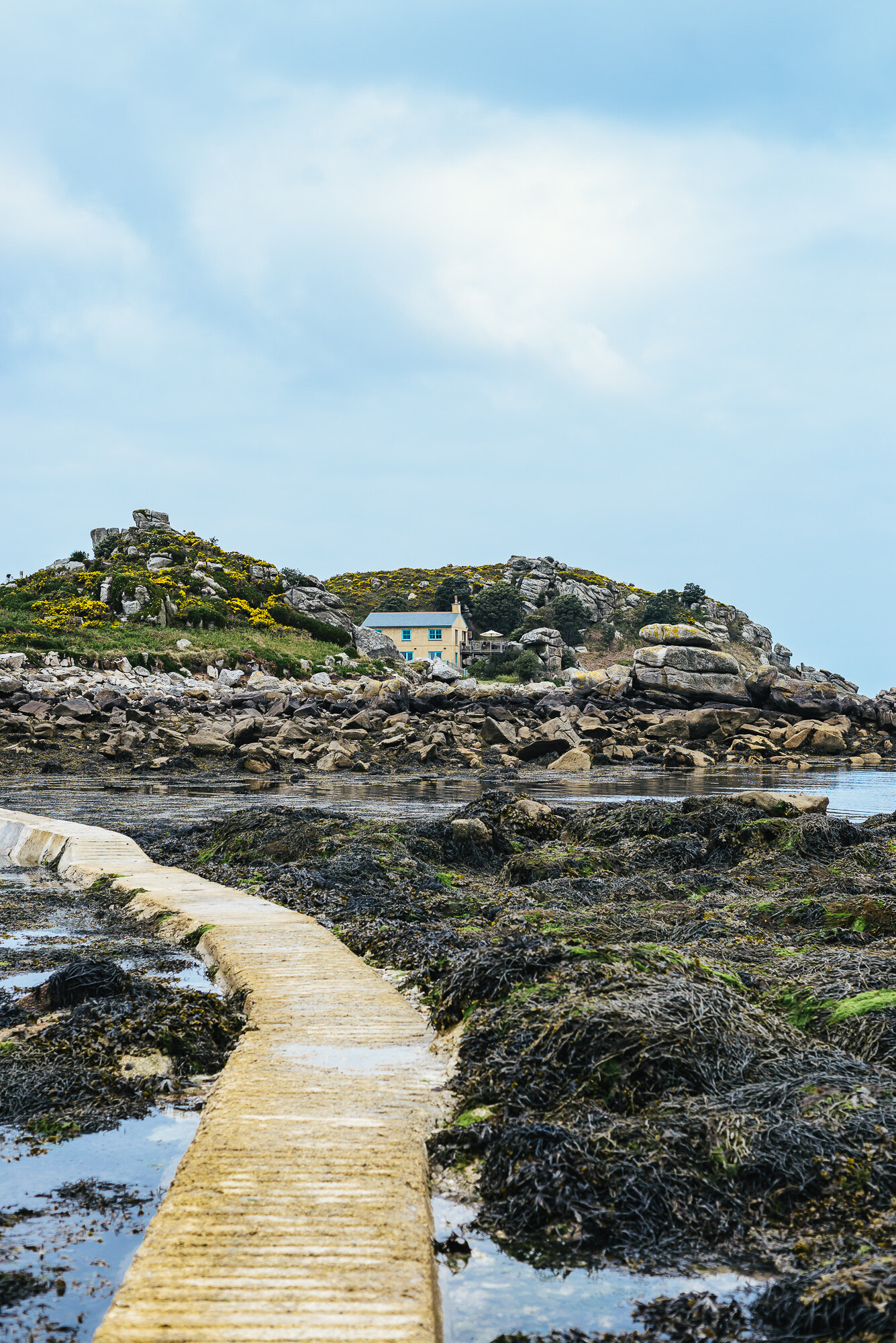Scilly: a drop in the ocean
It’s straightforward advice. When you reach Land’s End just keep going.
Teetering on a cliff edge in the extreme southwest of England, Land’s End appears to be the last bit of soil before the great expanse of the Atlantic Ocean. It’s a photo opportunity for sightseers exploring the dramatic, romantic landscapes of Cornwall. They can use the natural beauty as a selfie backdrop – or there’s a signpost with arrows pointing to cities around the world. New York is 3,147 miles from there.
But the sign gives the game away a little. It turns out this is not quite the end of the land. Because there’s an arrow pointing to a place called Scilly ... And it’s just 28 miles thataway.
Actually Scilly is a ‘they’. An archipelago of 140 or so islands, islets and rocks. If Cornwall is shaped a little like a foot with Land’s End on the tip of its toe, then the Isles of Scilly are pebbles it is trying to kick across the ‘pond’ to North America.
The mainland and the islands are close and yet at times seem so very far apart: the waters between are treacherous. Razor-like reefs have scuppered many ships over the centuries. Consequently, the six-days-a-week passenger ferry has a specially shallow draft, but this means it can rock-and-roll easily especially when the sea gets choppy in winter. So from November to February it’s laid up in mainland town Penzance harbour and the ‘Skybus’ light aircraft is the remaining option for trippers wanting to get out there … or get back. Unless, that is, the weather says No.
Scilly’s five inhabited islands each has its own personality. Tresco is well-tended and well-to-do. Golf buggies zip around neat country lanes, linking time-share cottages with beachside bistros. St Agnes is thoughtful if easygoing. St Mary’s – especially Hugh Town – busy and businesslike. St Martin’s, to the east, is an island of entrepreneurs and beach-bums. And westerly Bryher is hardworking, craggy and windswept.
Fisherman Mark Pender on Church Quay (near the island’s central village, rather ambitiously named The Town), Bryher Island
I climb aboard Mark’s boat while he inspects baskets and barrels filled with the day’s catch. He pulls out a big-clawed crab. ‘This is your dinner tonight,’ he says with a grin. The restaurant I am booked into, it turns out, had phoned through a special order for me. That’s the kind of place Scilly is. Everyone knows everyone else. They know how to be friendly, and how to make little things special.
The west seaboard takes the full brunt of whatever the Atlantic Ocean can throw at these islands. It’s beautiful and haunting: a coast that has been gnawed away to leave coves of sawtooth rocks and white-sand beaches.
St Warna’s Cove, on the west coast of St Agnes Island
On this brutal, beautiful far west shoreline it’s apparent that St Agnes Island still isn’t the end of the British Isles, in the same way Land’s End isn’t either. Four miles further out (just visible after dusk) stands the lighthouse of Bishop Rock, the final lump of the Isles of Scilly. A lonely but necessary place.
Left to right: a view from the garrison above main settlement Hugh Town, on St Mary’s Island; a path through to Merchant’s Point, Tresco Island
In the high season, when seasonal workers and fair-weather residents are in town, St Mary’s is the most populous island with about 2,100 folk (little St Agnes can muster about 70!) It’s this tiddly, tight-knit island community – and the fact that no one can leave in a hurry without the use of a getaway speedboat – that contributes to a bygone sense of security and safety here. Honesty boxes are popular: farms and producers stock little wayside cabinets with herbs, jams, candy, homegrown veggies, handicrafts and the like. Passersby take their pick and leave their money.
The beastly seas that pummel these beautiful islands also protect them. It’s no surprise this is designated an ‘Area of Outstanding Natural Beauty’: Scilly is rugged, remote and unspoiled, lushly green with sweeping sandy beaches and azure waters, or broketooth shorelines with rocks like shark fins. In the depths of winter, the North Atlantic Current brings a mild air that encourages sub-tropical plants and wildflowers, and the associated biodiversity that they support.
Lunch at the New Inn pub, Tresco Island
When the weather turns (and it can – without notice) pubs dotted across the archipelago offer a warm, dry haven – an ideal opportunity to enjoy some island fare and a chat with locals. New Inn on Tresco Island is a short walk from Tresco Abbey Gardens. They occupy a sheltered, one-time quarry, the granite from which was used to build the island’s cottages. This extraordinary seventeen-acre garden of flame trees, lobster-claw clianthus, banana trees and palms is home to roaming Chinese pheasants and red squirrels.
Looking across Bryher Island’s Kitchen Porth, past Hangman Island to Cromwell’s Castle on Tresco Island
Bryher is the most evocative island in the archipelago. The side that catches the morning sun – that faces Tresco – is a place of huddled hamlets, of boatyards and chandlers, of cottage industries where they make fudge, or dress lobster and crab. But the other side, the ocean side, is wild and majestic, with a ragged volcanic shoreline and features with names like Hell Bay and Badplace Hill.
Going round the House of the Head, a tricky stretch of water at the top end of Tresco Island
Sometimes – about twenty days throughout the year – there are extreme Spring Tides (or Walking Tides), when the channel between Tresco and Bryher islands empties so much that it is possible to walk between the islands for a few hours. But most often you’ll need to jump on a little ferry boat – the one which heads from Bryher to Old Grimsby on the far side of Tresco navigates the crashing, crushing waves of the ‘House of the Head’.
Lawrence’s Bay Beach is one of several on St Martin’s Island
Scilly has the sunniest beaches of the United Kingdom, clocking up an average 200 hours extra each year. That’s what Scilly means, apparently, ‘sunny’ – from the Latin sul because to the Romans these were the Sun Islands. The climate is so close to being sub-tropical that it feels like it’s breathing down your neck. And all that mild, moist air nourishes the flower farms and vineyard on St Martin’s Island.
Sam Hicks and his piglets, Troytown Farm, St Agnes Island
St Agnes Island’s Troytown Farm has a herd of nine dairy cows, piglets and a paddock by the shoreline where intrepid hikers can pitch their tents at any time of year. Sam Hicks’ family has worked these six acres of land for three centuries – but he, like his forebears, is equally enthusiastic about the sea as he is the soil. He’s a rower. And the boat of choice throughout Cornwall is called a gig. Developed in the seventeenth century for pilotage, it’s nowadays a popular six-oared racing rowboat. Though it’s predominantly a Cornish sport there are competitive gig leagues around the world, from the United States to Australia. But locals have never stopped turning to it as a lifeboat. ‘Over the years many ships have run into trouble in these waters,’ 40-year-old Hicks tells me. ‘Islanders have always rushed out in gigs to help crew, passengers if they can.’









